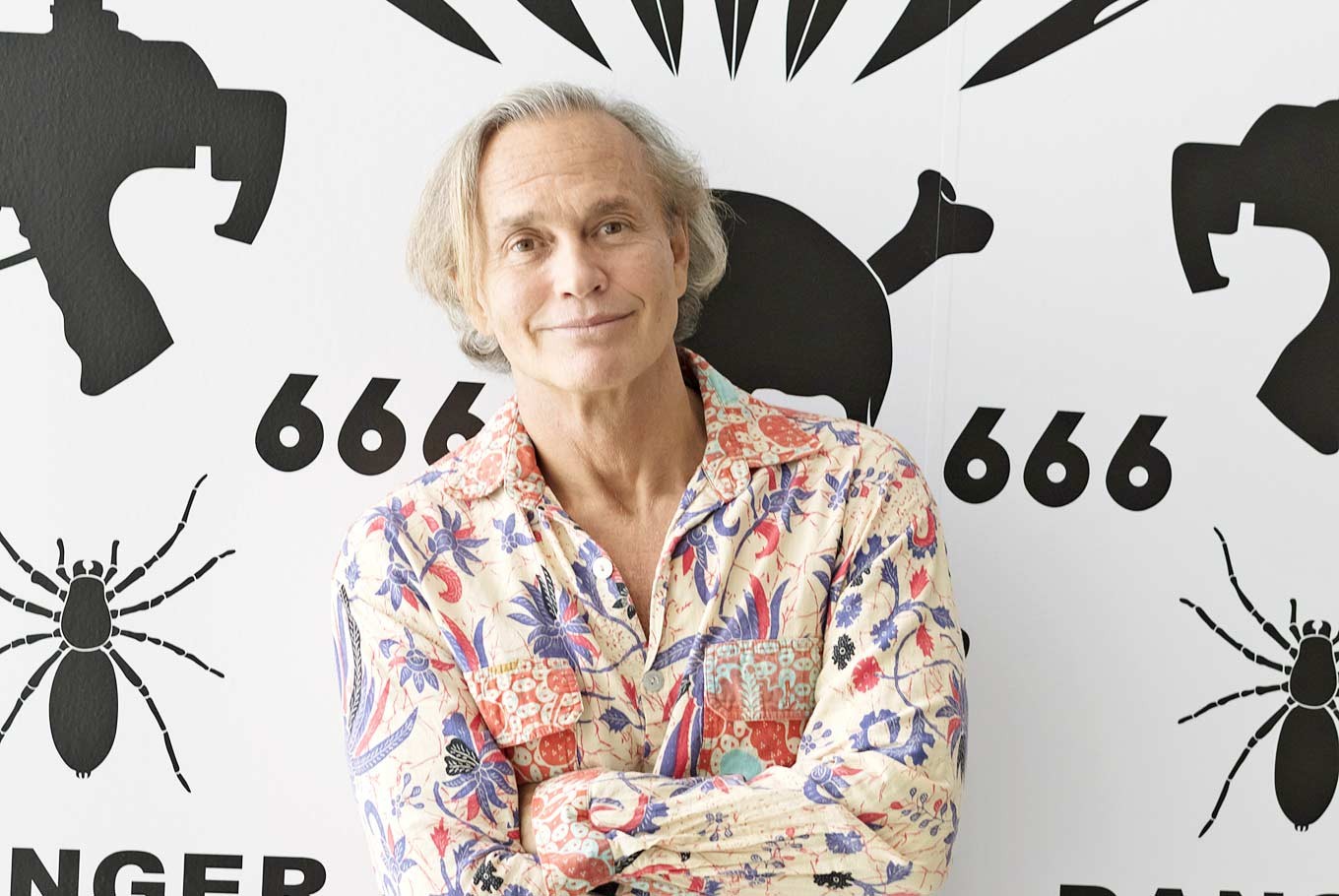Popular Reads
Top Results
Can't find what you're looking for?
View all search resultsPopular Reads
Top Results
Can't find what you're looking for?
View all search resultsAshley Bickerton: Comes full circle
Change text size
Gift Premium Articles
to Anyone
I
nternationally renowned Bali-based artist Ashley Bickerton, famous for his conceptual works of “parodic iconography,” has recently been featured in a series of solo exhibitions that look back on his restless career.
A show touted as the “first United States survey” featuring Bickerton’s work running through Dec. 16 at The FLAG Art Foundation in New York City brings together many of his most iconic works.
The Bickerton exhibit includes historically significant works like Tormented Self-Portrait (Susie at Arles), a 1988 sculpture now in The Museum of Modern Art collection and which established the Barbados-born artist as a force on the New York art scene, as well as pivotal works he created in Indonesia over the last two decades.
In the late 1980s, Bickerton, along with Jeff Koons, Meyer Vaisman and Peter Halley, was part of the “Fantastic Four” credited with leading the Neo-Geo movement.
Dissatisfied with his life, Bickerton left New York, traveling for several years through tropical countries until finally making Bali his home in 1993. Married to Indonesian attorney Cherry Saraswati Bickerton and with Indonesian children from a previous marriage, he has deep, permanent connections to his adopted homeland.
Despite his long residence in Indonesia and stellar reputation, Bickerton has garnered little domestic attention. It is surprising that an artist of his caliber has not been asked to exhibit at the National Gallery or been tapped to represent Indonesia in important international biennales, as is common practice in other countries.
Perhaps this says more about the issues of identity and belonging in contemporary Indonesia than it does about Bickerton’s place in Indonesian art history, which proudly claims Western artists like Walter Spies, Rudolf Bonnet and Le Mayeur.
Although the Indonesian art world seems reluctant to embrace him, Bickerton values his outsider status and explains his self-imposed exile: “I tried not to be on the radar. I was getting away and I didn’t want to compromise.”
Bickerton also told the overflowing New York crowd on the opening reception of his exhibit that certain works “grow easily in Bali.”
The craftsmanship, materials and composition of his quintessentially Balinese works in the exhibition, such as LH 17 ( 2007 ) and Famili ( 2007 ), which were both created in Indonesia, feature elaborate wooden frames with inlaid coconut, mother of pearl and coins, showing the environmental influence of where they were made and are a powerful counterbalance to his US-produced works.
Bickerton has reemerged on the international art scene in recent years to garner renewed interest. Following on the heels of his major retrospective at London’s Newport Street Gallery (owned by artist Damien Hirst, a long-time friend), Bickerton says this show is “more intimate with historical work that affords wild juxtapositions, bringing together those threads and arcs that I have expressed in different voices over the years.”
By reconstituting his diverse output on a smaller scale, Bickerton’s exhibition at the FLAG allows visitors to explore his works as part of a cohesive whole.
Comprising 22 pieces dating from 1985 to the present, there are plenty of opportunities to examine his thinking over the past three decades. Several spaces contain only two or three works, giving each piece — including several beautifully executed, muscular sculptures from the late 1980s — room to breathe and reassert themselves in a new political climate.
Like someone whose tongue keeps probing a sore tooth, Bickerton returns again and again to issues of power, consumerism and stereotypes to understand our place within these systems.
The multimedia painting TITNW 1 (2010-2011), a dark image of children surrounded by neon signs and the artist’s own branded name, when seen alongside Good Painting ( 1988 ), are clearly a play on cultural artifice, something Bickerton has acknowledged as “the thread that runs through my work from the beginning.”
Bickerton’s art, full of bright colors and slick surfaces, can seem like simplified riffs on consumer culture. But when seen as part of a longer, multifaceted practice of art, his work holds deep truths about the experience of being human and the choices we make and those that are made for us.
At The FLAG Art Foundation, Bickerton returns to his artistic roots in New York, having spent over 20 years redefining his position on the world stage from his studio in Bali. Perhaps it is time for the Indonesian art world to claim him as an important force and welcome him, and his contributions, with open arms.
____________________________
For more information, visit flagartfoundation.org.











